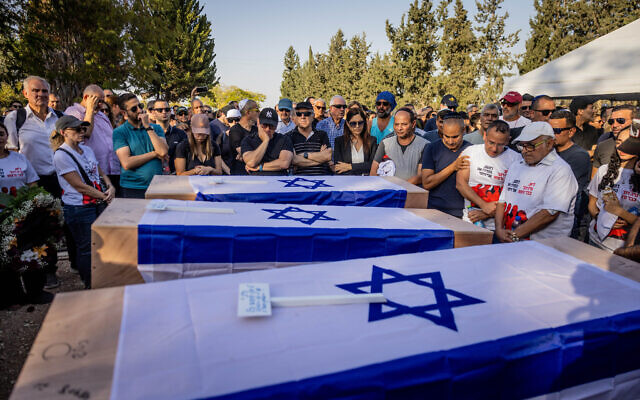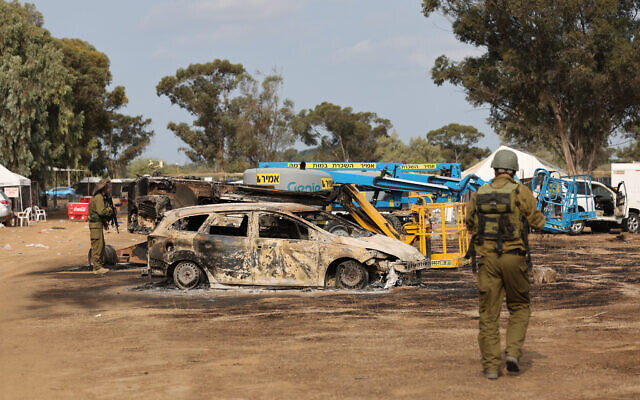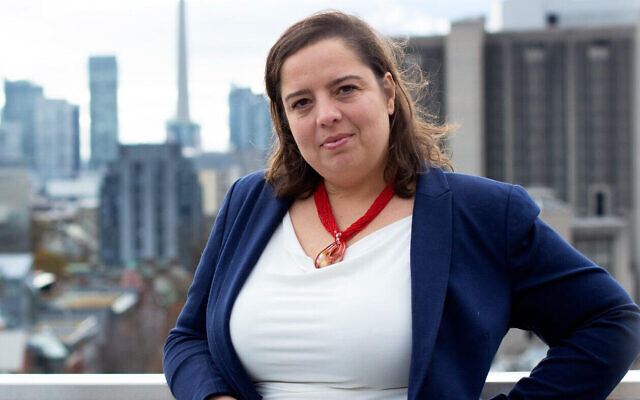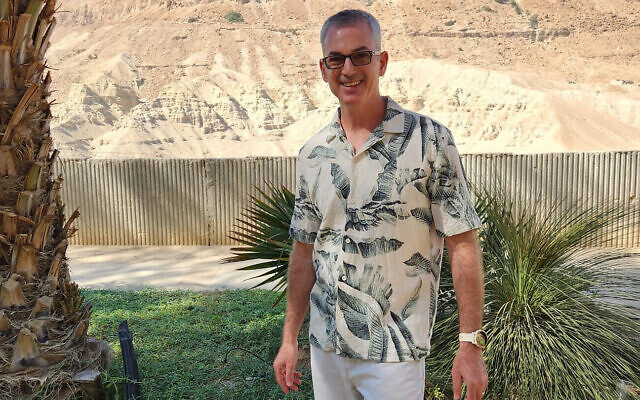Testimony of Hamas Massacre Survivors Compiled on New Website
With support from the Shoah Foundation, virtual repository October7.org documents eyewitness accounts of the Hamas atrocities and translates them into four languages and counting.

Just two days after the Oct. 7 Hamas massacres, as the first horrific testimonies of survivors became publicly known, Raz Elipsur and Adi Clinton, an Israeli brother-sister team, realized their stories had to be told to the world.
The traumatic events of that day led them to create October7.org, an online repository of firsthand accounts gleaned from social media and translated into English. They were soon joined by volunteers who helped with the translating, editing, website building and design — and verifying that survivors consented to have their stories shared.
“We believe the people of the world must know what happened on that horrific day, and we think October7.org holds a great value in the documentation of true eyewitness stories from that massacre,” said the site’s administrators in a press release.
Some 3,000 terrorists breached the Gaza border on Oct. 7 and slaughtered 1,400 people — mainly civilians, many entire families — as they rampaged through communities in southern Israel, including at the Supernova rave outside Kibbutz Re’im that saw 260 partygoers slaughtered by gunmen on motorcycles.
They also abducted over 240 people to the Strip, including at least 30 children.
Elipsur and Clinton declined a request for an interview by The Times of Israel, saying they did not want their own stories to draw attention away from the victims.

The testimonies are heart-wrenching and chilling, like this one from Naama G.: “I had been bleeding and playing dead under garbage bags for over 30 minutes, but knew I had to use every last bit of strength to crawl between the dead bodies.”
Or this from Ido M.: “They had this gleeful, happy look as they slaughtered innocent people.”
And from Omer B.D.: “We went as a group of 12 to the party, but only 9 made it back.”
The website has 120 testimonies and counting, translated from Hebrew into English, French, Japanese and Spanish.
Soon, survivors’ voices will be available in Arabic, German, Russian, Italian and Portuguese.
Testimonies are firsthand accounts from residents of Gaza border communities, attendees of the Supernova rave party, and anyone else who happened to be targeted by the thousands of Hamas terrorists who breached the security barrier separating the Gaza Strip from Israel on the morning of Oct. 7.
Victims give October7.org permission to share their stories. Surnames are initialized to protect victims’ privacy.
October7.org is seeking partnerships such as the ones already forged with the USC Shoah Foundation, which produces audio-visual testimonies from Holocaust survivors, and with Mapping the Massacres, an interactive online map of the Gaza border communities that were attacked and all the people murdered or kidnapped and where they lived.

“We need to tell what we went through,” said Miri Gad Mesika, a survivor of the attack at Kibbutz Be’eri, “especially when there are people in the world who think some of the things didn’t even happen, that maybe some of the things were made up.”
“Even I feel it was a terrible dream because of the sheer horror and hellishness of it all, the things we went through,” she added. “That’s why the stories must be told again and again. By the same people, by different people. Never stop telling.”
Prof. Anna Shternshis, director of the Anne Tanenbaum Centre for Jewish Studies and the Al and Malka Green Professor of Yiddish Studies at the University of Toronto, compared the stories on October7.org to accounts by Holocaust victims during the war — such as the ones collected in Ilye Eherburgh’s and Vassily Grossman’s 1944 compilation “The Black Book of Soviet Jewry” — and found common themes.
“Ridicule and mockery of the victims as they are being murdered was one of the things I noticed,” Shternshis said. “And the pleasure the killers had, as though they savored the violence. They say things like, ‘Am I going to let you live two minutes more, or will I kill you now?’”
Another theme is what Shternshis called “scary math.”
“Testimonies tend to count how many loved ones were killed,” she said. “‘Ten of us went to the party but only two came back.’”
Shternshis said quantification was an attempt to overcome the limitations of language.

“To say, ‘It was scary,’ or ‘It was chaotic,’ does not capture the experience, does not deliver the message to someone who wasn’t there,” she said.
Compiling testimonies is not a uniquely Jewish phenomenon, said Shternshis, citing Ukrainian efforts to document atrocities committed by the Russians.
October7.org says it has no political agenda, “simply awareness and sharing first-hand accounts,” noting the site was created before public opinion toward Israel started shifting.
But Yaniv Hegyi of Kibbutz Be’eri, who is head of the Kibbutz Movement’s community leadership, said Oct. 7 marks a radical break with old political conceptions.
“After what happened I understood once and for all it is either us or them,” said Hegyi, who describes himself as left wing.
Hegyi said he was involved over the years in numerous initiatives to foster dialogue and ties with the residents of Gaza, who live just a few minutes’ drive from his home.
“I always hoped and worked for change. I tried to create a carrier pigeon project connecting petting zoos for kids on both sides,” he said. “The IDF agreed to help with the logistics of pigeons going back and forth, but Hamas did not want normalization.”

Hegyi is involved in an initiative similar to October7.org, in which the text messages of victims are being collected to document the hours of horror when Hamas terrorists went from house to house murdering, raping, pillaging and kidnapping.
Many of these messages are from people who were either murdered or kidnapped.
Though nearly a tenth of Be’eri’s population of 1,100 — including babies, women and the elderly — was either murdered or kidnapped, Hegyi said he had no desire for revenge.
“I just don’t want them to be here anymore because their goal is to destroy us. They educate their children to hate from infancy,” he said. “The testimonies are a way to let the world know the truth.”
- News
- Israel
- hamas
- Gaza
- West Bank
- Raz Elipsur and Adi Clinton
- Kibbutz Re’im
- Supernova rave party
- USC Shoah Foundation
- Mapping the Massacres
- Miri Gad Mesika
- Kibbutz Beeri
- Prof. Anna Shternshis
- Anne Tanenbaum Centre for Jewish Studies
- Al and Malka Green Professor of Yiddish Studies at the University of Toronto
- October7.org
- The Black Book of Soviet Jewry
- Yaniv Hegyi
- IDF



comments